Contents
Geometric Data Science: a new area initiated by the Data Science group in the MIF
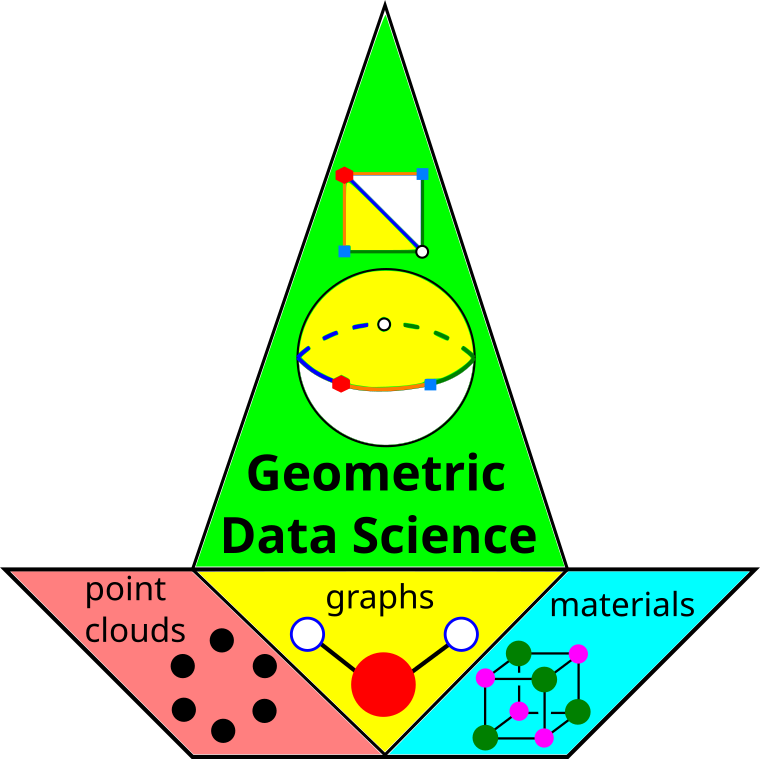 |
Geometric Data Science develops geographic-style maps and polynomial-time algorithms for moduli spaces of real data objects considered under practically important equivalence relations.
The first full solution in
FoCM 2024,
ACA 2023,
Chirality 2023
described the space of 2D lattices modulo rigid motion and uniform scaling, parametrised as a unit square whose vertices (0,0) and (0,1) represent all square lattices and hexagonal lattices, respectively.
The second full solution in MATCH 2025 built an invertible and bi-continuous invariant of protein backbones under rigid motion in R3.
Other important data objects are unordered point clouds studied in CVPR 2023, e.g. clouds of atomic centres in a molecule, embedded graphs, e.g. molecular graphs and abstract graphs in metric spaces, and periodic point sets modelling all solid crystalline materials under isometry (any distance-preserving transformation) in NeurIPS 2022.
In the image: the benzene is represented by the hexagonal cloud of carbon atoms without hydrogens; the water molecule is represented by the graph with one oxygen and two hydrogens;
the table salt NaCl is represented by a cubic lattice of sodium and chlorine ions.
|
The image shows the kite in the middle (in green and yellow) and the trapezium at the bottom (in red, yellow, and blue) whose sets of 4 vertices are indistinguishable by 6 pairwise distances. This pair motivated the new stronger invariants.
Back to Top of this page | Back to Home page
The latest advances in Geometric Data Science, see all publications further below
Back to Top of this page | Back to Home page
Publications in Geometric Data Science
for applications in chemistry and biology since 2020
Back to advances in GDS |
Back to Top of this page |
Back to Home page
Publications in Applied Mathematics: Applied Topology, Computer Vision, and Climate since 2011
Back to advances in GDS |
Back to Top of this page |
Back to Home page
Publications in Pure Mathematics: topology, graphs, non-commutative algebra in 1999-2010
- 2008 - 2010:
singularity theory related to knots and links
- 2005 - 2007:
postdoctoral work on non-commutative algebra
- 2001 - 2004:
PhD work on classifications of embedded graphs
- 1999 - 2000: MSc work
on link invariants and basic embeddings
Back to Top of this page | Back to Home page
Selected 10 papers in top journals and conferences
- 2025: D. Widdowson, V. Kurlin.
Geographic-style maps with a local novelty distance help navigate in the materials space.
Scientific Reports, a top 35 publication venue across all subjects.
This paper defined the local novelty distance that quantifies the novelty of any new material relative to known databases in a fraction of a second on a typical desktop.
- 2025: O. Anosova, D. Widdowoson, V. Kurlin.
Recognition of near-duplicate periodic patterns by continuous metrics with approximation guarantees.
Pattern Recognition, a top 7 publication venue in Computer Vision.
This paper introduced the first continuous metrics on periodic structures under rigid motion that can be computed in polynomial time with approximation guarantees.
- 2024: V. Kurlin.
Mathematics of 2-dimensional lattices.
Foundations of Computational Mathematics, a top 15 publication venue in Computational Mathematics.
This paper finally resolved past discontinuities of 2-dimensional lattice bases (under rigid motion) and continuously parametrised moduli spaces of lattices under isometry and rigid motion (composed with uniform scaling) in dimension 2.
- 2023: Y. Elkin, V. Kurlin.
A new near-linear time algorithm for k-nearest neighbor search using a compressed cover tree.
Proceedings of ICML: International Conference on Machine Learning, a top 20 publication venue across all subjects.
This paper justified a near-linear parametrised complexity for nearest neighbour search in any metric spaces.
- 2023: D. Widdowson, V. Kurlin.
Recognizing Rigid Patterns of Unlabeled Point Clouds by Complete and Continuous Isometry Invariants.
Proceedings of CVPR: Computer Vision and Pattern Recognition, a top 2 publication venue across all subjects.
This paper extended the isometry classification of triangles to arbitrary clouds of unlabeled points in any Euclidean space.
- 2022: D. Widdowson, V. Kurlin.
Resolving the data ambiguity for periodic crystals.
Proceedings of NeurIPS 2022: Neural Information Processing Systems, a top 10 publication venue across all subjects.
This paper justified the Crystal Isometry Principle extending Mendeleev's table to a continuous space of periodic crystals.
- 2022: Q. Zhu, J. Johal, D. Widdowson, Z. Pang, B. Li, C. Kane, V. Kurlin, G. Day, M. Little, A. Cooper.
Analogy Powered by Prediction and Structural Invariants.
J American Chemical Society.
This paper in a top 35 publication venue across all subjects reported new material predicted by invariants from NeurIPS.
- 2014: V. Kurlin.
A fast and robust algorithm to count topologically persistent holes in noisy clouds.
Proceedings of CVPR 2014:
Computer Vision and Pattern Recognition, p.1458-1463.
This paper is in a top 2 publication venue across all subjects, the highest h-index conference in any field.
- 2008: C. Kearton, V. Kurlin.
All 2-dimensional links live inside a universal 3-dimensional polyhedron.
AGT: Algebraic and Geometric Topology, v.8 (3), p. 1223-1247, 2008.
This paper in a top 15 publication venue in Geometry developed the singularity theory for 2-dimensional links.
- 2005: V. Kurlin.
Compressed Drinfeld associators.
Journal of Algebra, v.292 (1), p.184-242, 2005.
This paper in a top 10 venue in Algebra proved a short formula for log(e^x e^y) modulo commutators of commutators.
Back to Top of this page | Back to Home page
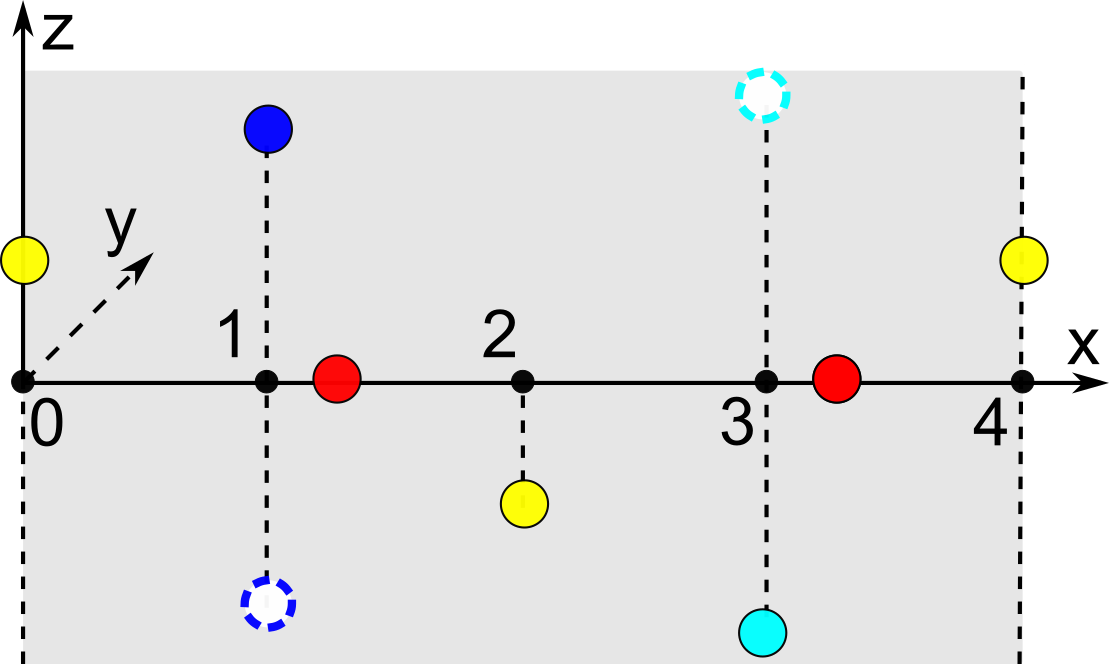 |
- Vitaliy Kurlin.
- Complete and continuous invariants of 1-periodic sequences in polynomial time.
- SIAM Journal on Mathematics of Data Science, v.7(4), p.1643-1663 (2025), doi:10.1137/25M1733574.
 [20 pages] [20 pages]
 [project page] [project page]
 [reference] [reference]
|
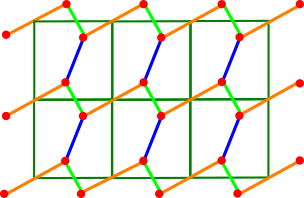 |
- J.McManus, V.Kurlin
- Computing the bridge length: the key ingredient in a continuous isometry classification of periodic point sets.
- Acta Cryst A, v.81 (2025), doi:10.1107/S2053273325008253.
 [26 pages, 1.4M] [26 pages, 1.4M]
 [project page] [project page]
 [reference] [reference]
|
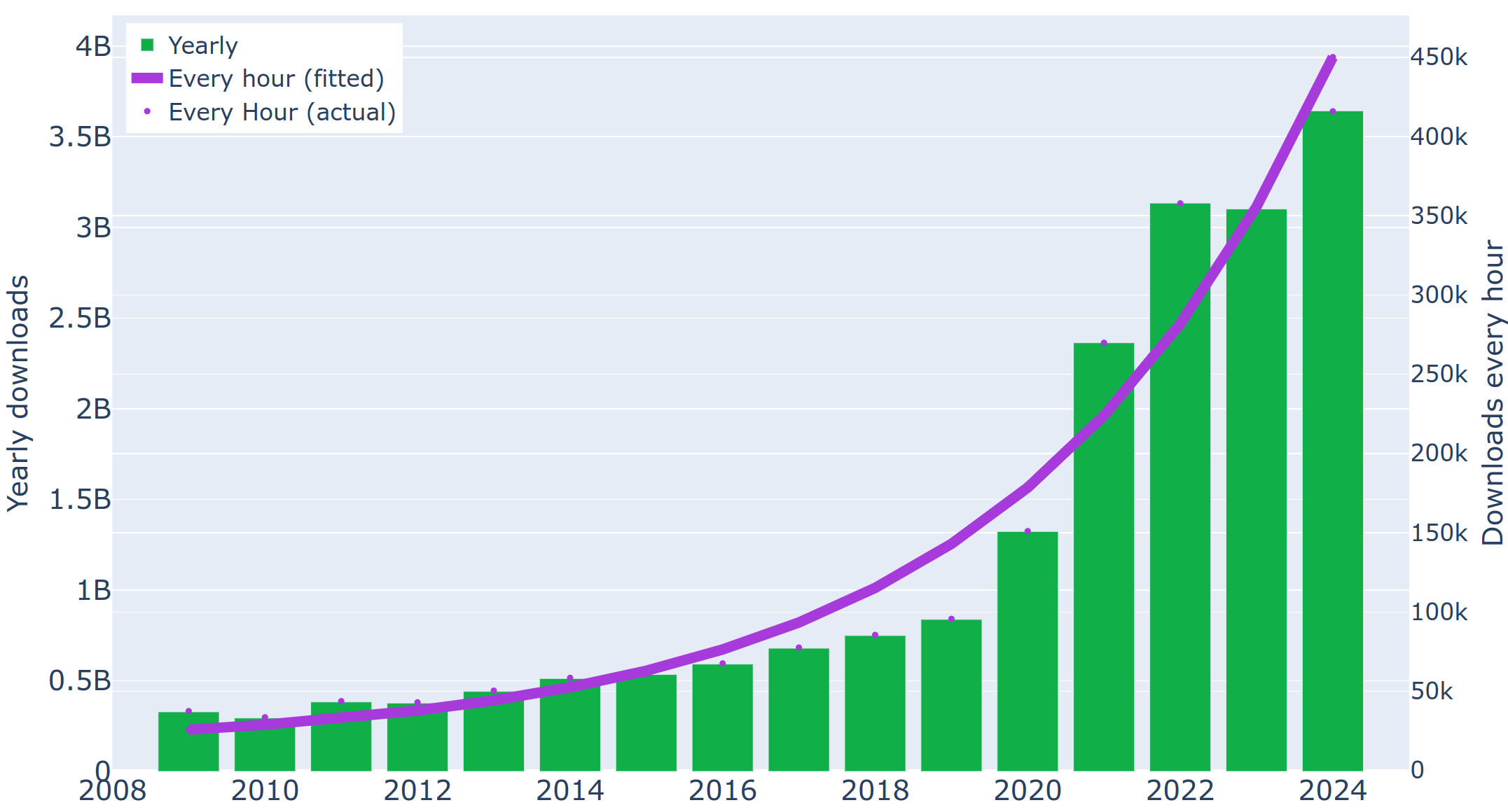 |
- A.Wlodawer, Z.Dauter, P.Rubach, W.Minor, M.Jaskolski, W.Jeffcott, Z.Jiang, O.Anosova, V.Kurlin
- Duplicate entries in the Protein Data Bank: how to detect and handle them.
- Acta Crystallographica D, v81 (4), p.170-180, 2025, doi:10.1107/S2059798325001883.
 [11 pages, 1.5M] [11 pages, 1.5M]
 [project page] [project page]
 [reference] [reference]
|
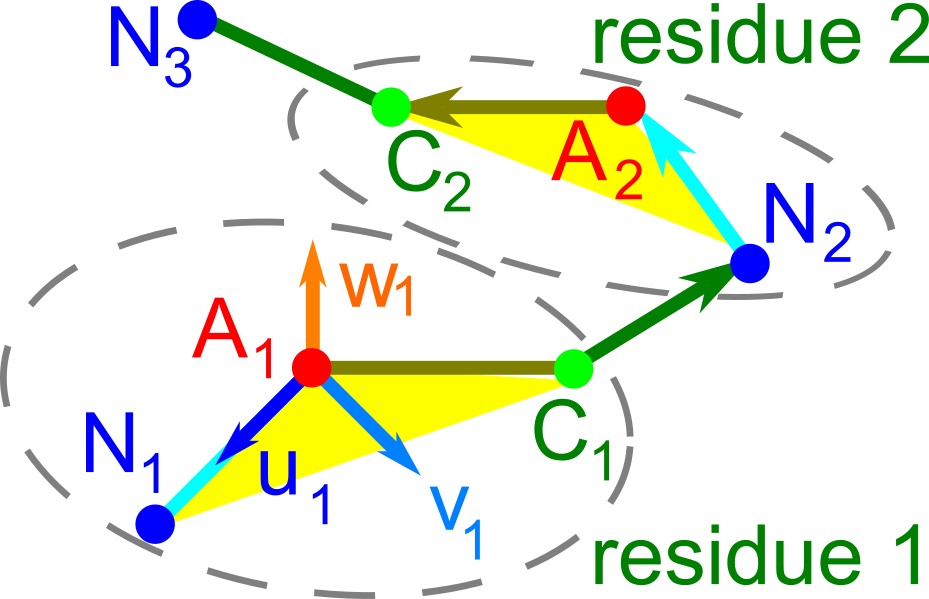 |
- Olga Anosova, Alexey Gorelov, Will Jeffcott, Ziqiu Jiang, Vitaliy Kurlin.
- A complete and bi-continuous invariant of protein backbones under rigid motion.
- MATCH Comm. Math. Comp. Chemistry, v.94 (1), p.97-134, 2025,
doi:10.46793/match.94-1.097A.
 [34 pages, 3.2M] [34 pages, 3.2M]
 [project page] [project page]
 [reference] [reference]
|
Back to All papers |
Back to Top of this page |
Back to Home page
 |
- Vitaliy Kurlin.
- Polynomial-time algorithms for continuous metrics on atomic clouds of unordered
points.
- MATCH Communications in Mathematical and in Computer Chemistry, v.91 (1), p.79-108, 2024.
 [30 pages, 1M] [30 pages, 1M]
 [project page] [project page]
 [reference] [reference]
|
 |
- Philip Smith, Andy McLauchlin, Tom Franklin, Peiyao Yan, Emily Cunliffe, Tom Hasell, Vitaliy A Kurlin, Colin Kerr, Jonathan Attwood, Michael P Shaver, Tom O McDonald.
- A data-driven analysis of HDPE post-consumer recyclate for sustainable bottle packaging.
- Resources, Conservation and Recycling, v.205, 107538, 2024.
-
 [11 pages] [11 pages]
 [project page] [project page]
 [reference] [reference]
|
Back to All papers |
Back to Top of this page |
Back to Home page
 |
- Yury Elkin, Vitaliy Kurlin.
- A new near-linear time algorithm for k-nearest neighbor search using a compressed cover tree.
- ICML 2023 (International Conference on Machine Learning), p.9267-9311.
Top 20 publication venue across all subjects including Nature and Science.
 [45 pages, 615K] [45 pages, 615K]
 [project page] [project page]
 [reference] [reference]
|
 |
- Dan Widdowson, Vitaliy Kurlin.
Video (8 min)
Poster (pdf)
- Recognizing rigid patterns of unlabeled point clouds by complete and continuous isometry invariants with no false negatives and no false positives.
- Proceedings of CVPR 2023 (Computer Vision and Pattern Recognition), p.1275-1284.
Top 2 publication venue across all subjects, second only to Nature.
Extended version of section 3 for metric spaces:
 [latest pdf]
[latest pdf]
Extended version of section 4 for Euclidean spaces:
 [latest pdf]
[latest pdf]
-
 [10 pages, 1.4M] [10 pages, 1.4M]
 [project page] [project page]
 [reference] [reference]
|


|
- Matt Bright, Andy Cooper, Vitaliy Kurlin.
- Continuous chiral distances for 2-dimensional lattices.
- Journal Chirality, v.35 (12), p.920-936, 2023.
- Special issue of the International Symposium on Chirality 2022.
-
 [17 pages, 4.2M] [17 pages, 4.2M]
 [project page] [project page]
 [reference] [reference]
|
 |
- Daniel Schwalbe-Koda, Dan Widdowson, Tuan Anh Pham, Vitaliy Kurlin.
- Inorganic synthesis-structure maps in zeolites with machine learning and crystallographic distances.
- Digital Discovery, v.2 (6), p.1911-1924, 2023, doi:10.1039/D3DD00134B.
 [30 pages, 1M] [30 pages, 1M]
 [project page] [project page]
 [reference] [reference]
|
 |
- Milo Torda, John Goulermas, Roland Púček, Vitaliy Kurlin.
- Entropic trust region for densest crystallographic symmetry group packings.
- SIAM Journal on Scientific Computing, v.45 (4), p.B493-B522, 2023.
-
 [accepted version, 52 pages, 21M] [accepted version, 52 pages, 21M]
 [project page] [project page]
 [reference] [reference]
|

|
- C.Hargreaves, M.Gaultois, L.Daniels, E.Watts, V.Kurlin, M.Moran, Y.Dang, R.Morris, A.Morscher, K.Thompson, M.Wright, B.Prasad, F.Blanc, C.Collins, C.Crawford, B.Duff, J.Evans, J.Gamon, G.Han, B.Leube, H.Niu, A.Perez, A.Robinson, O.Rogan, P.Sharp, E.Shoko, M.Sonni, W.Thomas, A.Vasylenko, L.Wang, M.Rosseinsky, M.Dyer.
- A Database of Experimentally Measured Lithium Solid Electrolyte Conductivities Evaluated with Machine Learning. npj Computational Materials, v.9, 9, 2023.
|
Back to All papers |
Back to Top of this page |
Back to Home page

|
- Milo Torda, John Goulermas, Vitaliy Kurlin, Graeme Day.
- Densest plane group packings of regular polygons.
- Physical Review E, v.106 (5), 054603, 2022.
-
 [13 pages, 372K] [13 pages, 372K]
 [project page] [project page]
 [reference] [reference]
|

|
- Qiang Zhu, Jay Johal, Dan Widdowson, Zhongfu Pang, Boyu Li, Christopher M Kane, Vitaliy A Kurlin, Graeme M Day, Marc Little, Andrew I Cooper.
- Analogy Powered by Prediction and Structural Invariants: Computationally-Led Discovery of a Mesoporous Hydrogen-Bonded Organic Cage Crystal.
- JACS (J Amer. Chem. Society), v.144 (22), p.9893–9901, 2022.
-
 [9 pages, 3M] [9 pages, 3M]
 [project page] [project page]
 [reference] [reference]
|
 |
- Aikaterini Vriza, Ioana Sovago, Dan Widdowson, Peter Wood, Vitaliy Kurlin, Matthew Dyer.
- Molecular Set Transformer: Attending to the co-crystals in the Cambridge Structural Database.
- Digital Discovery, v.1, p.834-850, 2022.
-
 [17 pages, 3.8M] [17 pages, 3.8M]
 [project page] [project page]
 [reference] [reference]
|
 |
- Phil Smith, Vitaliy Kurlin.
- A practical algorithm for degree-k Voronoi domains of three-dimensional periodic point sets.
- Lecture Notes in Computer Science (Proceedings of ISVC 2022), v.13599, p.377-391.
-
 [14 pages, 2.1M] [14 pages, 2.1M]
 [project page] [project page]
 [reference] [reference]
|
 |
- Olga Anosova, Vitaliy Kurlin.
- Density functions of periodic sequences.
- Lecture Notes in Computer Science (Proceedings of DGMM 2022: Discrete Geometry and Mathematical Morphology), v.13493, p.395-408.
-
 [13 pages, 2M] [13 pages, 2M]
 [project page] [project page]
 [reference] [reference]
|
 |
- Jakob Ropers, Marco Mosca, Olga Anosova, Vitaliy Kurlin,
Andrew Cooper.
- Fast predictions of lattice energies by continuous isometry invariants of crystal structures.
- Proceedings of DAMDID: Data Analytics and Management in Data Intensive Domains, p.178–192.
-
 [early version] [early version]
 [project page] [project page]
 [reference] [reference]
|
 |
- Yury Elkin, Vitaliy Kurlin.
- Counterexamples expose gaps in the proof of time complexity for cover trees introduced in 2006.
- Proceedings of TopoInVis 2022: IEEE Workshop on Topological Data Analysis and Visualization, p.9-17.
-
 [9 pages, 240K] [9 pages, 240K]
 [project page] [project page]
 [reference] [reference]
|
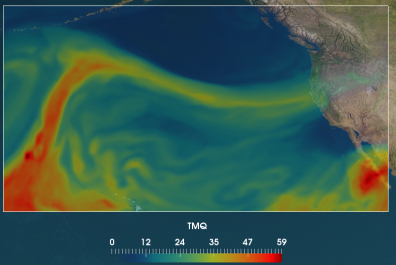 |
- Grzegorz Muszynski, Vitaliy Kurlin, Dmitriy Morozov, Michael Wehner, Karthik Kashinath, Prabhat Ram
- Topological Methods for Pattern Detection in Climate Data.
- Big Data Analytics in Earth, Atmospheric and Ocean Sciences, p.227-242, Wiley.
-
 [project page] [project page]
 [reference] [reference]
 [official link] [official link]
|
Back to All papers |
Back to Top of this page |
Back to Home page
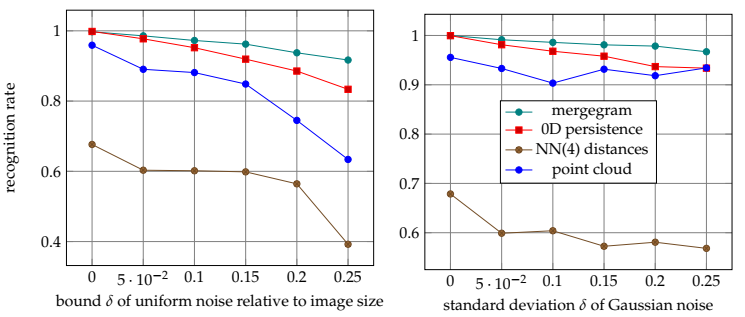 |
- Yury Elkin, Vitaliy Kurlin.
- Isometry invariant shape recognition of projectively perturbed point clouds by the mergegram extending 0D persistence.
- Mathematics, v.9 (17), 2121, 2021.
-
 [17 pages, 1.5M] [17 pages, 1.5M]
 [project page] [project page]
 [reference] [reference]
|

 |
- Phil Smith, Vitaliy Kurlin.
- Skeletonisation algorithms with theoretical guarantees for unorganised point clouds with high levels of noise.
- Pattern Recognition, v.115, 107902, 2021.
-
 [extended, 48 pages, 7.6M] [extended, 48 pages, 7.6M]
 [project page] [project page]
 [reference] [reference]
|

 
 |
- H.Edelsbrunner, T.Heiss, V.Kurlin, P.Smith, M.Wintraecken.
- The Density Fingerprint of a Periodic Point Set.
- Proceedings of the Symposium on Computational Geometry, v.189, p.32:1-32:16, 2021.
-
 [16 pages] [16 pages]
 [project page] [project page]
 [reference] [reference]
|
 |
- Aikaterini Vriza, Angelos Canaj, Rebecca Vismara, Laurence Cook, Troy Manning, Michael Gaultois, Peter Wood, Vitaliy Kurlin, Neil Berry, Matthew Dyer and Matthew Rosseinsky.
- One class classification as a practical approach for accelerating π-π co-crystal discovery.
- Chemical Science, v.12, p.1702-1719, 2021.
-
 [18 pages, 2.7M] [18 pages, 2.7M]
 [project page] [project page]
 [reference] [reference]
|
 |
- G. Muszynski, Prabhat, J. Balewski, K. Kashinath, M. Wehner, V. Kurlin.
- Atmospheric Blocking Pattern Recognition in Global Climate Model Simulation Data.
- Proceedings of ICPR: International Conference on Pattern Recognition.
-
 [8 pages, 5.9M] [8 pages, 5.9M]
 [project page] [project page]
 [reference] [reference]
|
Back to All papers |
Back to Top of this page |
Back to Home page

 |
- Cameron Hargreaves, Matthew Dyer, Michael Gaultois, Vitaliy Kurlin, Matthew Rosseinsky.
- The Earth Mover’s Distance as a Metric for the Space of Inorganic Compositions.
- Chemistry of Materials, v.32 (24), p.10610-10620, 2020.
-
 [11 pages, 3.5M] [11 pages, 3.5M]
 [project page] [project page]
 [reference] [reference]
|
 |
- Arshad Siddiqui, Vitaliy Kurlin.
- Polygonal Meshes of Noisy Images based on a new Thinning Algorithm with Theoretical Guarantees.
- Proceedings of VISAPP 2020 (International Conference on Computer Vision Theory and Applications).
-
 [10 pages, 16M] [10 pages, 16M]
 [project page] [project page]
 [reference] [reference]
 [official link] [official link]
|
 |
- Thomas Welsch, Vitaliy Kurlin.
- Synthesis through Unification Genetic Programming.
- Proceedings of GECCO: Genetic and Evolutionary Computation Conference.
-
 [8 pages, 414K] [8 pages, 414K]
 [official link] [official link]
|
Back to All papers |
Back to Top of this page |
Back to Home page
 |
- Jonathan Rutz et al.
- The Atmospheric River Tracking Method Intercomparison Project (ARTMIP): Quantifying Uncertainties in Atmospheric River Climatology.
- Journal of Geophysical Research: Atmospheres, v.124 (24), p.13777-13802, 2019.
-
 [50 pages, 5.5M] [50 pages, 5.5M]
 [project page] [project page]
 [reference] [reference]
|
 |
- Sara Kalisnik, Vitaliy Kurlin, Davorin Lesnik.
- A higher-dimensional Homologically Persistent Skeleton.
- Advances in Applied Mathematics, v.102, p.113-142, 2019.
-
 [30 pages, 1M] [30 pages, 1M]
 [project page] [project page]
 [reference] [reference]
|
 |
- Grzegorz Muszynski, Karthik Kashinath, Vitaliy Kurlin, Michael Wehner, Prabhat
- Topological Data Analysis and Machine Learning for Recognizing Atmospheric River Patterns in Large Climate Datasets.
- Geoscientific Model Development, v.12, p.613-628, 2019.
-
 [24 pages, 7.4M] [24 pages, 7.4M]
 [project page] [project page]
 [reference] [reference]
 [official link] [official link]
|
 |
- Naohiko Ban, Wataru Yamazaki, Vitaliy Kurlin.
- Development of a Reconstruction Method for Major Vortex Structure around Tandem Flapping Wing Object via Vortex Trajectory Method.
- American Institute of Aeronautics and Astronautics SciTech Forum 2019.
-
 [37 pages, 7.2M] [37 pages, 7.2M]
 [project page] [project page]
 [reference] [reference]
 [official link] [official link]
|
 |
- Vitaliy Kurlin, Grzegorz Muszynski.
- A persistence-based approach to automatic detection of line segments in images.
- Proceedings of CTIC 2019 (Computational Topology in Image Context)
Lecture Notes in Computer Science, v.11382, p.137-150, 2019.
-
 [14 pages, 2.7M] [14 pages, 2.7M]
 [project page] [project page]
 [reference] [reference]
 [official link] [official link]
|
Back to All papers |
Back to Top of this page |
Back to Home page
Papers in 2018:
GMD
CI
 |
- Jonathan Rutz et al.
- The Atmospheric River Tracking Method Intercomparison Project (ARTMIP): project goals and experimental design.
- Geoscientific Model Development, v.11, p.2455-2474, 2018.
-
 [20 pages, 5.3M] [20 pages, 5.3M]
 [project page] [project page]
 [reference] [reference]
|
Back to All papers |
Back to Top of this page |
Back to Home page
  |
- Vitaliy Kurlin, Donald Harvey.
- Superpixels Optimized by Color and Shape (SOCS).
- Proceedings of EMMCVPR 2017 (Energy Minimization Methods in Computer Vision and Pattern Recognition), LNCS, v.10746, p.297-311, Springer.
-
 [14 pages, 4.9M] [14 pages, 4.9M]
 [project page] [project page]
 [reference] [reference]
|
 vs vs
 |
|
Back to All papers |
Back to Top of this page |
Back to Home page
  |
- Jeremy Forsythe, Vitaliy Kurlin,
Andrew Fitzgibbon.
- Resolution-independent superpixels based on convex constrained meshes without small angles.
- Proceedings of ISVC 2016: International Symposium on Visual Computing.
- Lecture Notes in Computer Science, v.10072, p.223-233.
-
 [extended, 20 pages, 3.7M] [extended, 20 pages, 3.7M]
 [project page] [project page]
 [reference] [reference]
|


 |
- Vitaliy Kurlin.
- A fast persistence-based segmentation of noisy 2D clouds with provable guarantees.
- Pattern Recognition Letters, v.83, p.3-12, 2016.
-
 [full version: 16 pages, 4.2M] [full version: 16 pages, 4.2M]
 [project page] [project page]
 [reference] [reference]
 [official] [official]
|
Back to All papers |
Back to Top of this page |
Back to Home page

 |
- Vitaliy Kurlin.
- A one-dimensional Homologically Persistent Skeleton of a point cloud in any metric space.
- Computer Graphics Forum, v.34 (5), p.253-262, 2015.
- A special issue devoted to SGP 2015:
Eurographics Symposium on Geometry Processing.
-
 [extended, 14 pages, 3.2M] [extended, 14 pages, 3.2M]
 [project page] [project page]
 [reference] [reference]
|
  |
- Vitaliy Kurlin.
- A Homologically Persistent Skeleton is a fast and robust descriptor of interest points in 2D images.
- Lecture Notes in Computer Science, v. 9256, p.606-617, 2015.
- (Proceedings of
CAIP 2015: Computer Analysis of Images and Patterns).
-
 [12 pages, 1.2M] [12 pages, 1.2M]
 [project page] [project page]
 [reference] [reference]
 [official link] [official link]
|
 |
- Herbert Edelsbrunner, Mabel Iglesias-Ham, Vitaliy Kurlin.
- Relaxed disk packing.
- Proceedings of CCCG 2015:
Canadian Conference on Computational Geometry, p.128-135.
-
 [8 pages, 390K] [8 pages, 390K]
 [project page] [project page]
 [reference] [reference]
|
 |
- Vitaliy Kurlin.
- A linear time algorithm for visualizing knotted structures in 3 pages.
- Proceedings of IVAPP 2015:
Information Visualization Theory and Applications, p.5-16.
-
 [12 pages, 2.5M] [12 pages, 2.5M]
 [project page] [project page]
 [reference] [reference]
 [official link] [official link]
|
Back to All papers |
Back to Top of this page |
Back to Home page
 |
- Vitaliy Kurlin.
- A fast and robust algorithm to count topologically persistent holes in noisy clouds.
- Proceedings of CVPR 2014:
Computer Vision and Pattern Recognition, p.1458-1463
(top conference in Computer Science, the highest h-index conference in any field).
-
 [extended: 10 pages, 1.6M] [extended: 10 pages, 1.6M]
 [project page] [project page]
 [reference] [reference]
|

 |
- Vitaliy Kurlin.
- Auto-completion of contours in sketches, maps and sparse 2D images based on persistence.
- Proceedings of workshop CTIC (Computational Topology in Image Context) at SYNASC 2014
- (Symposium on Symbolic and Numeric Algorithms for Scientific Computing), p.594-601.
-
 [8 pages, 1.1M] [8 pages, 1.1M]
 [project page] [project page]
 [reference] [reference]
 [code: beta-version] [code: beta-version]
|
 |
- Vitaliy Kurlin, Marjan Safi-Samghabadi.
- Computing a skeleton of the configuration space of 2 round robots on a metric graph.
- Proceedings of ICRoM 2014:
International Conference on Robotics and Mechatronics, p.723-729.
-
 [7 pages, 370K]
Slides [pdf, 32 pages, 1.6M] [7 pages, 370K]
Slides [pdf, 32 pages, 1.6M]
 [official link] [official link]
|
@inproceedings{kurlin2014computing,
author = {Kurlin, V. and Safi-Samghabadi, M.},
title = {Computing a skeleton of the configuration space of 2 round robots on a metric graph},
booktitle = {Proceedings of ICRoM 2014: International Conference on Robotics and Mechatronics},
pages = {723-729},
year = {2014}
}- Input: a radius r of two robots and a metric graph G with fixed lengths of edges.
- Output: connected components of the configuration space of two robots in G.
- Running time: O(n4) for the number n of vertices in the given graph G.
- Abstract. A connected metric graph G with n vertices and without loops and multiple edges can be represented as an n-by-n matrix whose entries are length of edges of G. A robot in the metric graph G is a metric ball with a centre x in G and a radius r>0. The configuration space OC(G,r) of two robots in G is the set of all centers (x,y) such that the centres x,y are at least 2r away from each other. We introduce the configuration skeleton CS(G,r) that captures all connectivity information of the space OC(G,r). As a consequence we get a polynomial-time algorithm to find all connected components of OC(G,r) that are maximal subsets of all positions (x,y) connectable by collision-free motions.
Back to All papers |
Back to Top of this page |
Back to Home page
- Vitaliy Kurlin, Ludmila Mihaylova.
How many wireless sensors are needed to guarantee connectivity
of a 1D network with random inter-node spacings?
Journal of Applied Probability and Statistics,
v.8 (2), p.27-50, 2013.
 (1M, 24 pages).
(1M, 24 pages).
-
Alexey Chernov, Vitaliy Kurlin.
Reconstructing persistent graph structures from noisy images.
Journal Image-A,
v.3 (5), p.19-22, 2013.
 (229K, 4 pages).
(229K, 4 pages).
- Vitaliy Kurlin.
Computing braid groups of graphs with applications to robot motion planning.
Homology, Homotopy and Applications,
v.14 (1), p.159-180, 2012.
 (249K, 22 pages).
(249K, 22 pages).
Back to All papers |
Back to Top of this page |
Back to Home page
Papers in 2008 - 2010: singularity theory applied to knots and links
- Thomas Fiedler, Vitaliy Kurlin.
Recognizing trace graphs of closed braids.
Osaka Journal of Mathematics,
v.47 (4), p.885-909, 2010.
 (1.8M, 25 pages).
(1.8M, 25 pages).
- Thomas Fiedler, Vitaliy Kurlin.
A one-parameter approach to links in a solid torus.
Journal of the Mathematical Society of Japan,
v.62 (1), p.167-211, 2010.
 (1.72M, 45 pages).
(1.72M, 45 pages).
- Thomas Fiedler, Vitaliy Kurlin.
Fiber quadrisecants in knot isotopies.
J
Knot Theory Ramifications, v.17 (11), p.1415-1428, 2008.
 (780K, 14 pages).
(780K, 14 pages).
- Cherry Kearton, Vitaliy Kurlin.
All 2-dimensional links live inside a universal 3-dimensional polyhedron.
Algebraic & Geometric Topology, v.8 (3), p.1223-1247, 2008.
 (560K, 25 pages).
(560K, 25 pages).
- Vitaliy Kurlin.
Gauss paragraphs of classical links and a characterization of virtual link groups.
Math. Proc. Cambridge Phil. Society, v.145 (1), p.129-140, 2008.
 (223K, 12 pages).
(223K, 12 pages).
Back to All papers |
Back to Top of this page |
Back to Home page
Papers in 2005 - 2007: postdoctoral work on non-commutative algebra
- Vitaliy Kurlin, Daniel Lines.
Peripherally specified homomorphs of link groups.
J Knot Theory Ramifications, v.16 (6), p.719-740, 2007.
 (435K, 22 pages).
(435K, 22 pages).
- Vitaliy Kurlin.
The Baker-Campbell-Hausdorff formula in the free metabelian Lie algebra.
Journal of Lie Theory, v.17 (3), p.525-538, 2007.
 (190K, 14 pages).
(190K, 14 pages).
- Vitaliy Kurlin.
Three-page encoding and complexity theory for spatial graphs.
J Knot Theory Ramifications, v.16 (1), p.59-102, 2007.
 (800K, 44 pages).
(800K, 44 pages).
- Vitaliy Kurlin.
Compressed Drinfeld associators.
Journal of Algebra, v.292 (1), p.184-242, 2005.
 (400M, 59 pages).
(400M, 59 pages).
Back to All papers |
Back to Top of this page |
Back to Home page
Papers in 2001 - 2004: PhD work on classifications of embedded graphs
- Vitaliy Kurlin, Vladimir Vershinin.
Three-page embeddings of singular knots.
Functional Analysis and Its Applications, v.38 (1), p.14-27, 2004.
 (200K, 14 pages).
(200K, 14 pages).
- Vitaliy Kurlin.
Basic embeddings and 3-page embeddings of graphs.
Russian Mathematical Surveys, v.58 (2), p.372-374, 2003.
 (116K, 3 pages).
(116K, 3 pages).
- Vitaliy Kurlin.
Three-page Dynnikov's diagrams of spatial 3-valent graphs.
Functional Analysis and Its Applications, v.35 (3), p.230-233, 2001.
 (96K, 4 pages).
(96K, 4 pages).
Back to All papers |
Back to Top of this page |
Back to Home page
Papers in 1999 - 2000: MSc work on link invariants and basic embeddings
- Vitaliy Kurlin.
Basic embeddings into a product of graphs.
Topology and Its Applications, v.102 (2), p.113-137, 2000.
 (225K, 25 pages).
(225K, 25 pages).
- Vitaliy Kurlin.
Reduction of framed links to ordinary links.
Russian Mathematical Surveys, v.54 (4), p.845-846, 1999.
 (244K, 2 pages).
(244K, 2 pages).
- Vitaliy Kurlin.
Invariants of colored links.
Moscow University Math. Bulletin, v.54 (3), p.42-44, 1999.
 (670K, 3 pages).
(670K, 3 pages).
Back to All papers |
Back to Top of this page |
Back to Home page
Meetings in Geometric Data Science
- Future meetings
- Regular meetings and seminars
- Annual conference MACSMIN (since 2020).
- The weekly MIF++ seminar on zoom (since 2019).
- The DSTA group seminar for Liverpool students (since 2017).
- Past meetings
- Past tutorials
Back to Top of this page | Back to Home page
Description of the AMS session on Open Problems in Geometric Data Science at JMM 2026
- This session is supported by the AMS (American Mathematical Society) at
JMM (Joint Mathematics Meetings, the world's largest annual event in mathematics) and will discuss the advances and remaining problems in Geometric Data Science.
- The first fundamental (often ignored) question in Data Science is “same or different?” [0]
While sounding deceptively simple, this question is notoriously hard for many objects with ambiguous inputs. When walking or driving, our brains (but not computers) easily recognize obstacles whose visual representations change in our moving coordinate system.
- If a rigid object is given by ordered points such as corners, its rigid shape is uniquely determined by a quadratic-size distance matrix.
However, for important objects such as protein structures whose main atoms are ordered, a complete and linear-size invariant only recently detected thousands of unexpected duplicates in the Protein Data Bank [1].
- If given points are unordered, which is the most practical case, the naïve extension of matching such clouds (finite sets of points or their distance/Gram matrices) under Euclidean motion requires exponentially many permutations of points.
- Only the case of 3 points was fully resolved by the side-side-side theorem, which continuously parametrized the space of all triangles under congruence (Euclidean isometry) by inter-point distances satisfying a≤b≤c≤a+b. The resulting cone in the coordinates a,b,c can be viewed as a geographic-style map of the moduli space of 3 unordered points under isometry.
-
The inequalities 0<a≤b≤c≤a+b describe all realizable values of this complete invariant of triangles so that any triple (a,b,c) can be efficiently inverted to an original triangle, uniquely under isometry.
The naïve extension to more unordered points spectacularly fails already for 4 points in the plane due to infinitely many pairs of non-isometric 4-point clouds with the same 6 pairwise distances that satisfy a polynomial equation saying that the tetrahedron on 4 points has volume 0.
- It was a big embarrassment that even 4 points in the plane had no better than a brute-force complete invariant based on all 4!=24 permutations of points until the problem was solved in 2023, for a fixed Euclidean dimension, in a polynomial time for any number of unordered points under rigid motion [2].
Noise in real data motivates the second fundamental question of Data Science: "if different, by how much?" A rigorous answer needs a distance metric that satisfies all metric axioms and changes continuously under perturbations of given points, for example, in the Lipschitz sense.
-
This geo-mapping problem can be stated for many data objects (periodic sets, embedded graphs, simplicial complexes, and measures) under other equivalences (isometry composed with uniform scaling, affine or projective transformations).
-
For any real data objects and equivalence, an ideal parametrization of the resulting moduli space requires a complete and realizable invariant with a Lipschitz bi-continuous distance metric, both computable in a polynomial time of the input size.
- The problem has been fully solved for 2D lattices [3], but the 3D case is not finalized yet. Arbitrary periodic sets, which model all solid crystalline materials, have a generically complete near-linear-time invariant [4] and a complete invariant but with an approximate polynomial-time metric [5]. The open problem is to get a practically realizable “materials code”.
- [0] P.Sacchi et al. Same or different - that is the question: identification of crystal forms from crystal structure data. CrystEngComm, 22(43), pp.7170-7185, 2020.
- [1] O.Anosova, A.Gorelov, W.Jeffcott, Z.Jiang, V.Kurlin. A complete and bi-continuous invariant of protein backbones under rigid motion. MATCH Comm. Math. Comp. Chemistry, 94(1), 97-134, 2025.
- [2] D.Widdowson, V.Kurlin. Recognizing rigid patterns of unlabeled point clouds by complete and continuous invariants. CVPR 2023, p.1275-1284.
Extended versions with proofs and examples are in arxiv:2303.13486 and arxiv:2303.14161.
- [3] V.Kurlin. Mathematics of 2-dimensional lattices. Foundations of Computational Mathematics, v.24, 805–863, 2024.
- [4] D.Widdowson, V.Kurlin. Resolving the data ambiguity for periodic crystals. NeurIPS, v.35, 24625-24638, 2022.
- [5] O.Anosova, D.Widdowson, V.Kurlin. Recognition of near-duplicate periodic patterns by continuous metrics with approximation guarantees. Pattern Recognition, v.171, 112108, 2025.
Back to meetings in GDS |
Back to Top of this page |
Back to Home page
Rigidity Theory meets Geometric Data Science for applications in chemistry and biology at ICERM
- All organisers in the alphabetical order: Olga Anosova, Jacek Brodzki, Steven Gortler, Vitaliy Kurlin, Ileana Streinu.
- This workshop on 6-10 July 2026 will be held at the ICERM (Institute for Computational and Experimental Research in Mathematics), Brown University, Providence (US). If you are interested in participating, please e-mail Vitaliy Kurlin.
- The workshop will foster collaborations between the adjacent areas of Rigidity Theory [1] and Geometric Data Science for practically important applications to molecular structures.
The workshop is timely due to unexplored connections with another emerging area of Metric Algebraic Geometry [2], whose semester program will run at the ICERM in spring 2027.
-
- Rigidity theory [1] studies rigid frameworks with restrictions on graphs or their edge lengths, which make the resulting moduli spaces small, often consisting of a single class in the case of globally rigid frameworks.
Metric Algebraic Geometry [2] studies point sets given by polynomial equations, often in complex spaces and under actions of only reductive groups.
- Geometric Data Science bridges these areas with Computer Science via fast geographic-style maps for moduli spaces of any objects under important equivalences in computer vision [3], materials chemistry [4], and structural biology [5].
- The central geo-mapping problem states mathematical conditions to improve ill-defined clustering and dimensionality reduction approaches via complete and realizable invariants, and continuous metrics, all computable in polynomial time.
- [1] Michael Thorpe, Phillip Duxbury. Rigidity theory and applications. Springer Science & Business Media, 1999.
- [2] Paul Breiding, Kathlen Kohn, Bernd Sturmfels. Metric algebraic geometry. Springer, 2024.
- [3] D.Widdowson, V.Kurlin. Recognizing rigid patterns of unlabeled point clouds by complete and continuous invariants. CVPR 2023, p.1275-1284.
Extended versions with proofs and examples are in arxiv:2303.13486 and arxiv:2303.14161.
- [4] D.Widdowson, V.Kurlin. Resolving the data ambiguity for periodic crystals. NeurIPS, v.35, 24625-24638, 2022.
- [5] O.Anosova, A.Gorelov, W.Jeffcott, Z.Jiang, V.Kurlin. A complete and bi-continuous invariant of protein backbones under rigid motion. MATCH Comm. Math. Comp. Chemistry, 94(1), 97-134, 2025.
Back to Top of this page | Back to Home page
Videos of past talks, see also the most recent videos
- The Crystal Isometry Principle (13 min) at the
annual conference of the AI3SD network, Southampton, March 2022.
- The Crystal Isometry Principle (48 min) at MACSMIN: Maths & Computer Science for Materials Innovation, Sep 2021.
- A unique and continuous code of all periodic crystals (16 min) at MS-65 of the IUCr congress (online), August 2021.
- Introduction to invariant-based machine learning for periodic crystals (20 min) at the IUCr congress, August 2021.
- Introduction to Periodic Geometry and Topology (32 min) at the Geometric Topology Workshop (online), June 2021.
- Introduction to Periodic Geometry and Topology (44 min) at Geometry and Topology behind fabrics (online), May 2021.
- Introduction to Periodic Geometry (25 min) at MACSMIN: Maths & Computer Science for Materials Innovation, Sep 2020.
- The mergegram of a dendrogram (24 min) at Mathematical Foundations of Computer Science (online), August 2020.
- Peristence-based image skeletonization (30 min) at the SIAM symposium Topological Image Analysis (online), June 2020.
- Skeletonization algorithms with theoretical guarantees for unorganized point clouds (1 hour) at AATRN (US), May 2018.
- Topological methods for a faster materials discovery (47 min) at Applied Topology,
Bedlewo (Poland), June 2017.
- 1-min video spotlight
at CVPR 2014
(Computer Vision and Pattern Recognition), Columbus, Ohio (USA), June 2014.
-
Applications of Topological Data Analysis to Computer Vision (1 hour),
Microsoft
Research, Cambridge (UK), Feb 2014.
-
Reconstruction of plane graphs from noisy samples (1 hour),
Informatics Forum, Edinburgh University, April 2013.
Talks in 2025
- September 2025: Maths and Computer Science for Materials Innovation (MACSMIN), Liverpool (UK)
Title. Geometric Data Science established three principles of Atomic Geometry.
Video (52 min).
- July 2025: SIAM (Society for Industrial and Applied Mathematics) annual meeting, Montreal (Canada)
Title. Introduction to the geometry of nanostructures (30 min).
- July 2025: annual conference of the Materials Chemistry Consortium, Daresbury lab, UK
Title. The Crystal Isometry Principle infers chemistry from geometry (40 min).
- June 2025: Mathematics, AI and Data Science for Material Innovation, Lancaster (UK)
Title. The Principle of Molecular Rigidity (1 hour).
- June 2025:
ICMS workshop
Dimensionality Reduction Techniques, Edinburgh (UK)
Title. The Principle of Molecular Rigidity (45 min).
- May 2025: Geometry and Machine Learning, Sorbonne University, Paris (France)
Title. Geometry on moduli spaces of real data objects (45 min).
- April 2025: ICERM workshop Geometry of Materials, Brown University, Providence (US)
Title. The Crystal Isometry Principle infers chemistry from geometry (invited 45-min talk).
- January 2025:
Joint Mathematics Meetings, Seattle (US)
- Title 1. Geometric guarantees for explainable data science
(AMS Special Session on Topological, Algebraic, and Geometric Methods for Safe, Robust, and Explainable Machine Learning, 30 min)
- Title 2. Geographic-style maps of moduli spaces of rigid clouds of unordered points
(AMS Special Session on Applications of Algebraic Geometry, 30 min)
- Title 3. Drugs should beware of duplicates and chameleons in the Protein Data Bank
(AMS Special Session on The Convergence of AI, Math, and Statistics in Biomedical Research, 30 min)
- Title 4. Geometric Data Science extends Topological Data Analysis
(AMS Contributed Paper Session on Topology, 15 min).
Back to All lectures |
Back to Top of this page |
Back to Home page
Talks in 2024
- November 2024: workshop on Applied Geometry and Topology at Queen Mary University of London (UK)
Title. Can we geometrically sense the shape of a molecule? (55 min).
- October 2024: SIAM conference Mathematics of Data Science, Atlanta (US)
Title. Introduction to Geometric Data Science (2-hour tutorial).
- September 2024: Computational Persistence (ComPer), Graz (Austria)
Title. Generic families of metric spaces with trivial 1D persistence (20 min).
- September 2024: Maths and Computer Science for Materials Innovation (MACSMIN), Liverpool (UK)
Title: Complete, bi-continuous, and realisable invariants of atomic clouds. Video (48 min).
- July 2024: the mini-symposium Geometric Data Science at the European Congress of Mathematics, Sevilla (Spain)
Title. Geographic-style maps for moduli spaces of clouds of unordered points under rigid motion (30 min).
- June 2024: Biomolecular Topology: Modelling and Data Analysis, Singapore
Title. Can we geometrically sense the shape of a molecule? (50-min invited talk).
- May 2024: the mini-symposium at SIAM Mathematical Aspects of Materials Science, Pittsburgh (US)
Title. New mathematical principles in materials science (30 min).
- March 2024: tutorial at the Materials Informatics workshop in IMSI, Chicago (US)
Title. A mathematical analysis of GNoME and other materials databases (60 min).
- March 2024: the workshop Foundational Aspects of Neuro-Symbolic Computing, Santiago (Chile)
Title. Introductory tutorial in Geometric Data Science (90 min).
- January 2024 :
Joint Mathematics Meetings, San Francisco (US)
- Title 1. Geometric Data Science: old challenges and new solutions
(AMS Special Session on Applied Topology: Theory, Algorithms, and Applications, 30 min)
- Title 2. The Crystal Isometry Principle
(SIAM-USNCTAM Minisymposium on Mathematical Modeling of Complex Materials Systems, 30 min)
- Title 3. A complete and continuous isometry invariant of Euclidean clouds of unordered points
(AMS Special Session on Mathematics of Computer Vision, 30 min)
- Title 4. Continuous maps of the high-dimensional universe of protein structures
(AMS Special Session on Geometry and Topology of High-Dimensional Biomedical Data, 25 min)
- Title 5. Continuous metrics on moduli spaces of lattices
(AMS Contributed Paper Session on Geometry, 15 min).
Back to All lectures |
Back to Top of this page |
Back to Home page
Talks in 2023
- August 2023: International Union of Crystallography congress, Melbourne (Australia)
- Title 1. A continuous map of the Cambridge Structural Database in meaningful coordinates (30-min invited talk)
- Title 2. The Crystal Isometry Principle justifies a new data standard for all periodic crystals (20-min contributed talk).
- June 2023: CVPR workshop TAG-PRA: Topology, Algebra, and Geometry in Pattern Recognition, Vancouver (Canada)
Title: Recognizing rigid patterns of unlabeled point clouds by complete and continuous isometry invariants (1 hour).
- May 2023: Maths and Computer Science for Materials Innovation (MACSMIN), Liverpool (UK)
Title: Continuous crystallography and geometry of proteins. Video (51 min).
- April 2023: annual meeting of the British Crystallographic Association, University of Sheffield (United Kingdom)
Title: The Crystal Isometry Space continuously extends Mendeleev’s table to all periodic materials (20-min talk).
- January 2023: LMS workshop Applied topology and Robot Motion Planning, Queen Mary University of London, UK
Title: Geometric Data Science for unlabeled point clouds modulo Euclidean isometry (1-hour invited talk)
- January 2023: session `Topology, Algebra, and Geometry in the Mathematics of Data Science' at JMM, Boston (US)
Title: Geometric Data Science: old challenges and new solutions (30-min talk).
Back to All lectures |
Back to Top of this page |
Back to Home page
Talks in 2022
- October 2022: TopoInVis (Topological Data Analysis and Visualization) at IEEE VIS 2022, Oklahoma City (US)
Title: Counterexamples expose gaps in the proof of time complexity for cover trees introduced in 2006.
- October 2022: Fall Workshop in Computational Geometry, North Carolina State University (US)
Title: Geometric Data Science challenges and solutions (20-min talk).
- October 2022: 17th International Symposium on Visual Computing, San Diego (US)
Title: A practical algorithm for degree-k Voronoi domains of periodic point sets (20-min talk).
- September 2022: Topological Data Analysis and Machine Learning, online in Heidelberg (Germany)
Title: Generic families of finite sets with identical 1-dimensional persistence (10-min talk).
- September 2022: The interdisciplinary world of tangling, Potsdam (Germany)
Title: Practical classifications of periodic structures require thinking outside the cell (30-min talk).
- September 2022: Maths and Computer Science for Materials Innovation (MACSMIN), Liverpool (UK)
Title: Geometric Data Science for continuous crystallography. Video (53 min).
- July 2022: 32nd International Symposium on Chirality, Chicago (US)
Title: Easily computable chiral distances of 2D lattices (25-min talk).
- July 2022: Applied Topology in Frontier Sciences, online from Singapore
Title: Geometric Data Science challenges and solutions (50-min invited talk).
- July 2022: ICM geometry and topology section, Copenhagen (Denmark)
Title: Geometric Data Science challenges and solutions (15-min talk).
- July 2022: Applied Topology, Bedlewo Conference Centre (Poland)
Title: Geometric Data Science challenges and solutions (45-min invited talk).
- June 2022: annual workshop on Computational Topology at SoCG, Berlin (Germany)
Title: Persistence versus newer isometry invariants of point sets (30-min invited talk).
- March 2022: annual conference of the AI3SD network.
Title: The Crystal Isometry Principle (13-min video).
Back to All lectures |
Back to Top of this page |
Back to Home page
Talks in 2020-2021
Back to All lectures |
Back to Top of this page |
Back to Home page
Talks in 2019
Back to All lectures |
Back to Top of this page |
Back to Home page
Talks in 2017-2018
Back to All lectures |
Back to Top of this page |
Back to Home page
Talks in 2016
- August 2016: BTM 2016 (British Topology Meeting), Glasgow University (UK).
Title: Graph reconstruction from noisy scans based on persistence (1-hour keynote lecture).
- July 2016: ATMCS 8 (Applied Topology: Methods, Computation, Science), Turin (Italy).
Title: Graph reconstruction from noisy point samples (30-min software demo).
- July 2016: 7 ECM (European Congress of Mathematics), Berlin (Germany).
Title: Topological Computer Vision (20-min contributed talk).
- April 2016: symposium Today's Data Predicting Tomorrow, Loughborough (UK).
Title: Applications of Topological Data Analysis (25-min invited talk).
- April 2016: BAMC 2016: British Applied Mathematical Colloquium, Oxford (UK).
Title: Convex constrained meshes of superpixels (20-min contributed talk).
- January 2016: ATI workshop
Mathematical Foundations of Learning for non-Euclidean Objects, London (UK).
Title: Topological Computer Vision (20-min invited talk).
- January 2016: Prospects in Data Science, Southampton (UK).
Title: Topological Computer Vision (40-min keynote lecture).
Back to All lectures |
Back to Top of this page |
Back to Home page
Talks in 2015
- October 2015:
Computational Geometric and Algebraic Topology, Oberwolfach (Germany).
Title: HoPeS (cloud segmentations and persistent skeletons): (15-min software demo).
- September 2015:
CAT 2015:
Computational Algebraic Topology, Oxford (UK).
Title: Topological Computer Vision is a new area in Topological Data Analysis (25-min invited talk).
- July 2015:
ACA 2015:
Applications of Computer Algebra, Kalamata (Greece).
Title: Fast and stable topological profiles of noisy 2D images (30-min contributed talk).
- July 2015:
ACAT 2015:
Applied and Computational Algebraic Topology, IST Austria.
Title: A homologically persistent skeleton of an unstructured point cloud (40-min contributed talk).
- July 2015:
SGP 2015:
Eurographics Symposium on Geometry Processing, Graz (Austria).
Title: A homologically persistent skeleton of an unstructured point cloud (30-min talk with the accepted paper).
- June 2015:
DyToComp 2015:
Dynamics, Topology, and Computation, Bedlewo (Poland).
Title: A Homologically Persistent Skeleton in Computer Vision and beyond (30-min contributed talk).
- May 2015:
MMMDS:
Mathematical Methods for Massive Data Sets, Edinburgh (UK).
Title: Topological Data Analysis. Applications to Computer Vision (45-min invited talk).
- May 2015:
TopoInVis 2015:
Topology-Based Methods in Visualization, Annweiler (Germany).
Title: Computing invariants of knotted graphs given by sequences of 3D points (25-min talk with the accepted paper).
- April 2015:
BAMC:
British Applied Mathematical Colloquium, Cambridge (UK).
Title: Topological Data Analysis. Applications to Computer Vision (20-min contributed talk).
- March 2015:
IVAPP:
Information Visualization Theory and Applications, Berlin (Germany).
Title: A linear time algorithm for visualizing knotted structures in 3 pages (30-min talk with the accepted paper).
- February 2015:
Algebraic Topology: Computation, Data Analysis, and Applications
workshop at the Oxford Mathematical Institute (United Kingdom).
Title: Homologically persistent skeleton (20-min invited talk).
- January 2015:
Applied
Algebraic Topology network, Queen Mary University of London (UK).
Title: Topological Data Analysis. Applications to Computer Vision (45-min invited talk).
- January 2015:
Transpennine
Topology Triangle meeting, University of Sheffield (UK).
Title: Topological Data Analysis. Applications to Computer Vision (1 hour).
- January 2015: Winter School on Low-dimensional Topology, La Llagonne (France).
Title: Topological Data Analysis. Applications to Computer Vision (45-min invited talk).
Back to All lectures |
Back to Top of this page |
Back to Home page
Talks in 2011-2014
- September 2014:
CTIC: Computational Topology in Image Context, Timisoara (Romania).
- Title 1: Auto-completion of closed contours based on topological persistence (20 min).
- Title 2: Drawing a graph in 3 pages within its isotopy class in a linear time (20 min).
- September 2014:
British Topology Meeting,
Southampton (United Kingdom).
Title: Topological Data Analysis. Applications to Computer Vision (30 min).
- July 2014:
Applied Algebraic Topology,
CIEM, Castro Urdiales (Spain).
Title: Homologically Persistent Skeleton for visualizing high-dimensional data (45 min).
- July 2013,
Applied Topology,
Bedlewo Conference Centre (Poland).
Title: Reconstructing persistent structures from
noisy images of graphs in a metric space (40 min).
- July 2013 :
Applied
and Computational Algebraic Topology, Bremen (Germany).
Title: Persistent homotopy types of noisy samples of graphs in the plane (30 min).
Back to All lectures |
Back to Top of this page |
Back to Home page
Talks in 2005-2010
- June 2010:
Applied Topology:
Methods, Computation, Science, Munster (Germany).
Title: Braid groups of graphs and robot motion planning (30 min).
- September 2009:
8th
Mathematics of Networks meeting, Cambridge (UK).
Title: Connectivity of random 1-dimensional networks (45 min).
- July 2009 :
de
Brun Workshop on Computational Algebra, Galway (Ireland).
Title: The metabelian BCH formula and Drinfeld associators (45 min).
- June 2008:
Differential Equations and Topology,
Moscow.
Title: Peripherally specified homomorphs of link groups (20 min).
- April 2007 :
British
Mathematical Colloquium 2007, Swansea (UK).
Title: Basic embeddings of graphs (20 min).
- September 2006 :
Low-dimensional Manifolds,
Burgo de Osma (Spain).
Title: Compressed Drinfeld associators (25 min).
- August 2006 :
International
Congress of Mathematicians 2006,
Madrid (Spain).
Title: Compressed Baker-Campbell-Hausdorff formula
(20-min oral communication).
- May 2006 :
Knots,
Groups and 3-Manifolds,
Marseille (France).
Title: Peripherally specified homomorphs of link groups (20 min).
- April 2006 :
54th
Transpennine Topology Triangle meeting,
Sheffield (UK).
Title: Compressed Baker-Campbell-Hausdorff formula (1 hour).
- April 2006 :
Algebraic Geometry,
Singularities, Knots,
Liverpool (UK).
Title: Topological approach to the conjugacy of braids (1 hour).
- April 2006:
British Mathematical Colloquium 2006,
Newcastle (UK).
Title: Compressed Baker-Campbell-Hausdorff formula (25 min).
- November 2005:
Combinatorial Braid Theory, Brighton (UK).
Title: One-parameter approach to knot theory (45+45 min).
- June 2005, Rencontres du GDR Tresses (braids), Luminy (France).
Title: Fiedler's 1-parameter approach to knot theory (30 min).
Back to All lectures |
Back to Top of this page |
Back to Home page
Talks in 1999-2004
- September 2004 :
Rencontres du GDR Tresses (braids), Tatihou (France).
Title: Description of compressed Drinfeld associators (40 min).
- July 2004 :
Geometry, Topology and Combinatorics (satellite of
ECM 2004), Stockholm (Sweden).
Title: Computing compressed Drinfeld associators (30 min).
- June 2004: Rencontres du GDR Tresses (braids), Autrans (France).
Title: A program to compute Drinfeld associators (30 min).
- May 2003: Kolmogorov and Contemporary Mathematics, Moscow.
Title: Basic embeddings of graphs (20 min).
- June 2001: Knot Theory and Algebraic Geometry, Liverpool (UK).
Title: Three-page embeddings of spatial 3-valent graphs (30 min).
- October 2000:
Combinatorcs, Dynamics and Probability, Stockholm (Sweden).
Title: Algebraic classification of spatial 3-valent graphs (30 min).
- March 2000:
Geometry and Applications,
Novosibirsk.
Title: Diagrams of spatial 3-valent graphs (20 min).
- August 1999: Low-dimensional topology and combinatorial group theory,
Chelyabinsk.
Title: Reduction of framed links to ordinary ones (30 min).
Back to All lectures |
Back to Top of this page |
Back to Home page
Smaller research grants, see also larger awards
Back to Top of this page | Back to Home page
Co-authors in the alphabetical order (last updated in 2016)
- Alexey Chernov: Senior Lecturer in Statistics at University of Brighton, UK
- Herbert Edelsbrunner: Professor at IST Austria
- Thomas Fiedler: Professor at University of Toulouse III, France
- Andrew Fitzgibbon: Principal Researcher at Microsoft Research Cambridge, UK
- Jeremy Forsythe: former final year project student, UK
- Donald Harvey: former final year project student, UK
- Mabel Iglesias-Ham: PhD graduate from IST Austria
- Cherry Kearton: retired Reader, UK
- Daniel Lines: retired Professor at University of Burgundy, Dijon, France
- Ludmila Mihaylova: Professor at University of Sheffield, UK
- Marjan Safi-Samghabadi:
Lecturer at International Imam Khomeini University, Iran
- Christopher Smithers: former PhD student, UK
- Vladimir Vershinin: Professor at University of Montpellier II, France
Back to Top of this page |
Back to Home page


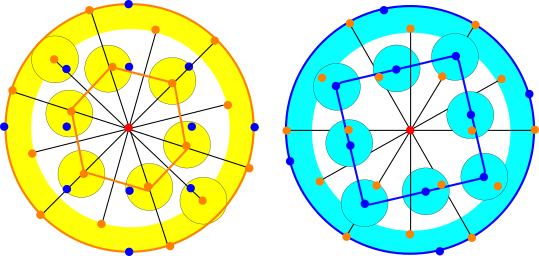




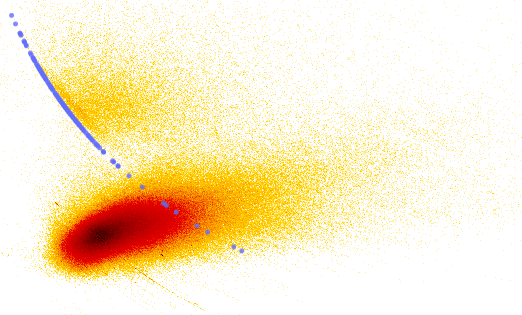

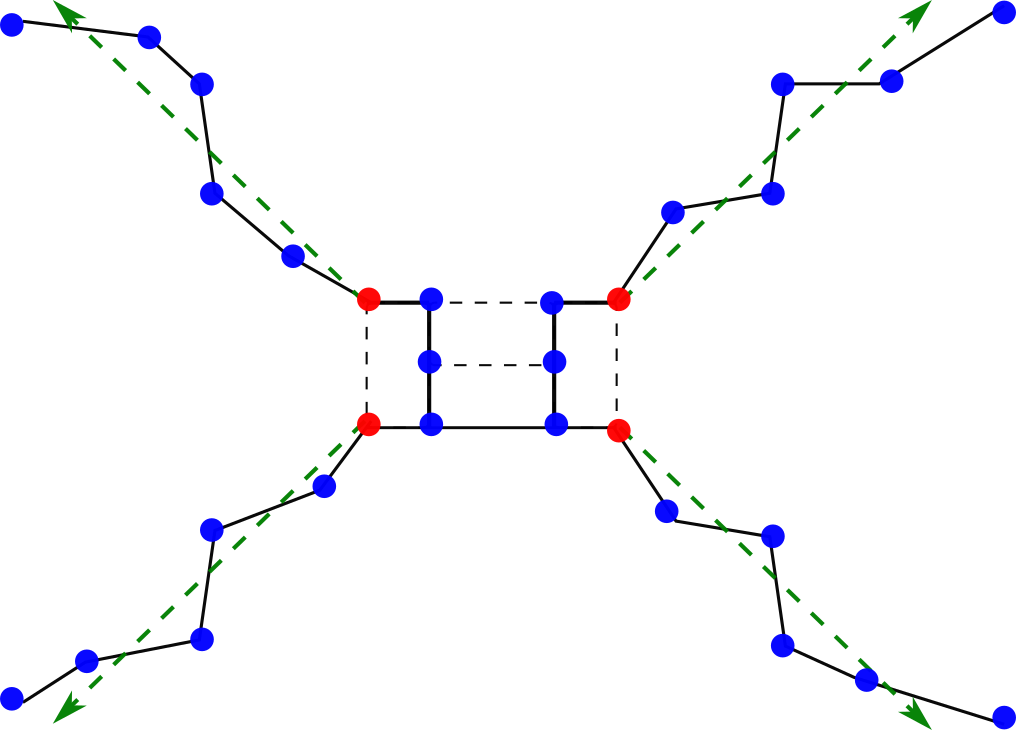
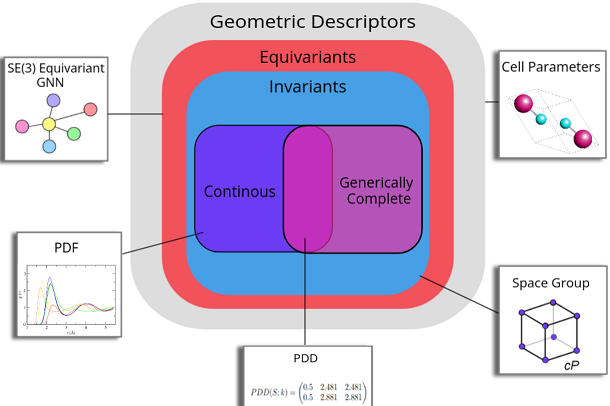
























































 vs
vs







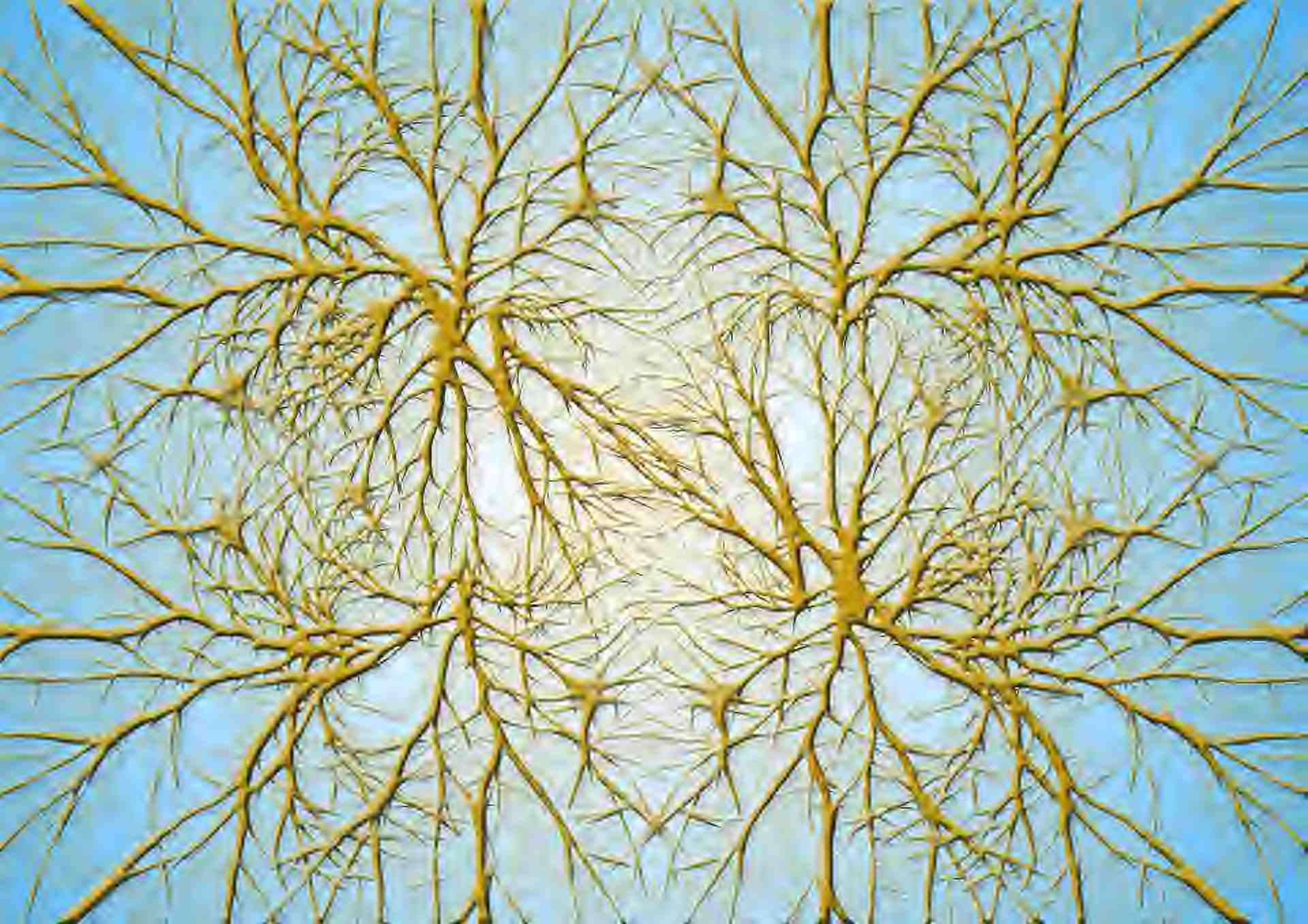










 (1M, 24 pages).
(1M, 24 pages). (229K, 4 pages).
(229K, 4 pages). (249K, 22 pages).
(249K, 22 pages). (1.8M, 25 pages).
(1.8M, 25 pages). (1.72M, 45 pages).
(1.72M, 45 pages). (780K, 14 pages).
(780K, 14 pages). (560K, 25 pages).
(560K, 25 pages). (223K, 12 pages).
(223K, 12 pages). (435K, 22 pages).
(435K, 22 pages). (190K, 14 pages).
(190K, 14 pages). (800K, 44 pages).
(800K, 44 pages). (400M, 59 pages).
(400M, 59 pages). (200K, 14 pages).
(200K, 14 pages). (116K, 3 pages).
(116K, 3 pages).  (96K, 4 pages).
(96K, 4 pages). (225K, 25 pages).
(225K, 25 pages). (244K, 2 pages).
(244K, 2 pages). (670K, 3 pages).
(670K, 3 pages).







